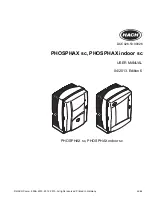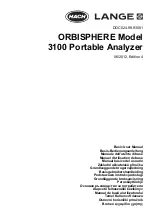
Document type:
Title:
Revision date:
Revision:
User's Manual (MUT)
Mod. N957 8k Multi-Channel Analyzer
28/05/2012
6
NPO:
Filename:
Number of pages:
Page:
00105/04:N957x.MUTx/06 N957_REV6
35
31
If the parameter value includes spaces (example: fiel names), these must
be written between quotation marks without spaces after the parameter id
(example: f" my config.conf")
When the application is launched with parameter -h, it is displayed in the
list of the available parameters.
List of available parameters with relevant default value and usage example:
f" my config.conf")-ffilename: output filename. If not specified 'N957Demo.conf' will be
assumed.
Example:
•
N957Demo -f"N957Demo.conf "
• N957Demo
-FN957Demo.conf
-h: shows the help screen.
Example:
• N957Demo
-h
5.2.1.3 N957Demo:
configuration file format
The N957Demo configuration file allows setting the significant parameters. The file
format is text type, structured in separate lines. For each line, initial spacing characters
(spaces, tabs, etc.) are ignored.
param_id [param_value]
If the first character line is #, the line is considered Commentary and all content is
ignored.
The valid lines (not comment) are structured as follows. where:
param_id: a keyword that specifies the parameter.
param_value: the value of the parameter, if provided by the same parameter.
param_id and param_value must be separated by at least a tab
Below is reported an example of configuration files, from which it is possible to obtain a
list of defined parameters, their meaning and default value:
# ****************************************************************
# N957Demo Configuration File
# ****************************************************************
# Lines starting with # (first column) are comments
#
# The board number
BOARD_NUM
0
#
# path to the executable file of gnuplot
GNUPLOT_PATH "."
#
# Save readout data into the Output File (0=don't save)
LOG_TO_FILE
0
#
# Readout data Output Filename ( meaningful only for LOG_TO_FILE!= 0)
LOG_FILENAME "data.log"
#
# Maximum number of samples to acquire (-1 means no limit)





































